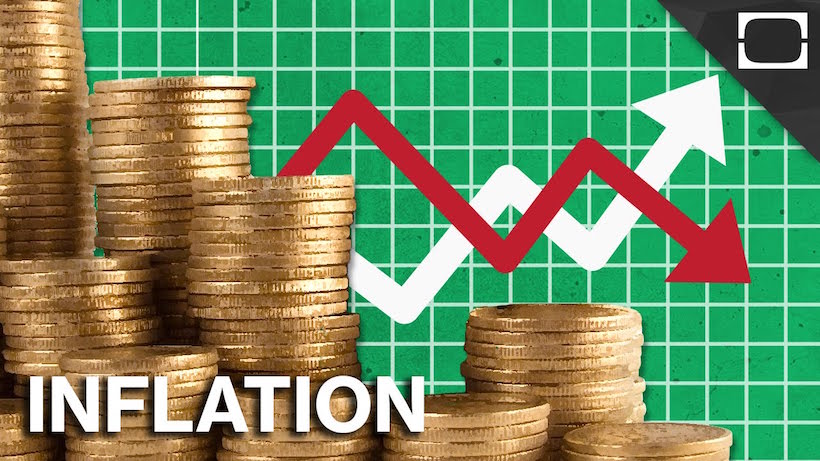What is Inflation?: Inflation means, a rise in general level of prices of goods and services in an economy over a period of time. In other words, prices of many goods and services such as housing, apparel, food, transportation, and fuel increase. It reduces the purchasing power of a currency. For instance, if inflation is 5%, it means that things that cost ₹100 last year will cost ₹105 this year.
Here’s a quick summary of India’s inflation situation:
- Current Rate: 4.83% (as of April 2024) [based on Consumer Price Index (CPI)]
- Target Range: 2% to 6% (set by Reserve Bank of India)
- Recent Trend: Inflation has been easing in recent months, down from a peak of around 5.10% in January 2024.
If you like this article then please like us on Facebook so that you can get our updates in future ……….and subscribe to our mailing list ” freely “
Quick Links
Meaning of Inflation
Inflation cannot be measured by an increase in the cost of one product or service, or even several products or services.Inflation is a general increase in the overall price level of the goods and services in the economy. To say in a single line Inflation is an upward movement in the average level of prices in the economy.
Inflation in India is currently within the Reserve Bank of India’s target range of 2% to 6%. The latest data, for April 2024, shows an inflation rate of 4.83%. This is down from a high of 5.10% in January 2024. Rural areas in India have a slightly higher inflation rate than urban areas.
Different types of inflation :
Inflation can be classified into two types as :
#Demand-pull Inflation :
When prices increase as result of excessive demand over supply for the economy as a whole then it is called as a Demand pull Inflation. The imbalance between the aggregate supply and demand is the main cause behind this scenario. It occurs when pressure of demand is such that it cannot be met by the currently available supply of output. Thus , we can say that it is case of full utilization of critical factors of production which can’t be substituted by any other inputs.
Main causes for demand pull inflation :
- Improper fiscal policy
- Improper monetary policy
- Economy growth > Normal long run growth rate.
#Cost Push inflation :
Cost push inflation occurs when we experience rising prices due to higher costs of production. Cost of production may increase due to an increase in factors of production like Raw materials , Wages , and any other overheads. Shortage of supply of labor, raw materials and capital drives up prices.Cost-push inflation occurs if demand for the products or services is inelastic.The increased price of the factors of production causes to a decreased supply of these goods/services. But the demand remains constant, the prices of commodities increase causing a rise in the overall price level.
Main causes for cost push inflation
- Extreme monopolistic conditions.
- Natural disasters
- government regulation and Improper taxation policy.
- Increase in wage rates.
- Increase in the cost of raw materials imparted from foreign due to various reasons.
Measures to control Inflation :
A)Monetary Measures:
The most important and commonly used method to control inflation is monetary policy of the Reserve Bank Of India.
1. Increase or decrease in Reserve Ratios :
It Involves increase or decrease in reserve ratios by the Reserve bank of India to reduce the credit creation capacity of commercial banks , so that the flow of money in the economy will be controlled.
2. Open Market Operations of RBI :
In this RBI issues some securities and bonds to commercial banks from which in turn it gets the money which controls the flow of money in the economy.
3. RBI Makes the borrowing of money costlier:
Here Reserve bank of India increases the interest rate on loans and advances to be sanctioned bycommercial banks. This makes the borrowing of money expensive for general public.
B) Fiscal Measures :
Fiscal measures to control inflation include taxation policy, government expenditure and public borrowings etc.,
Recommended Articles







